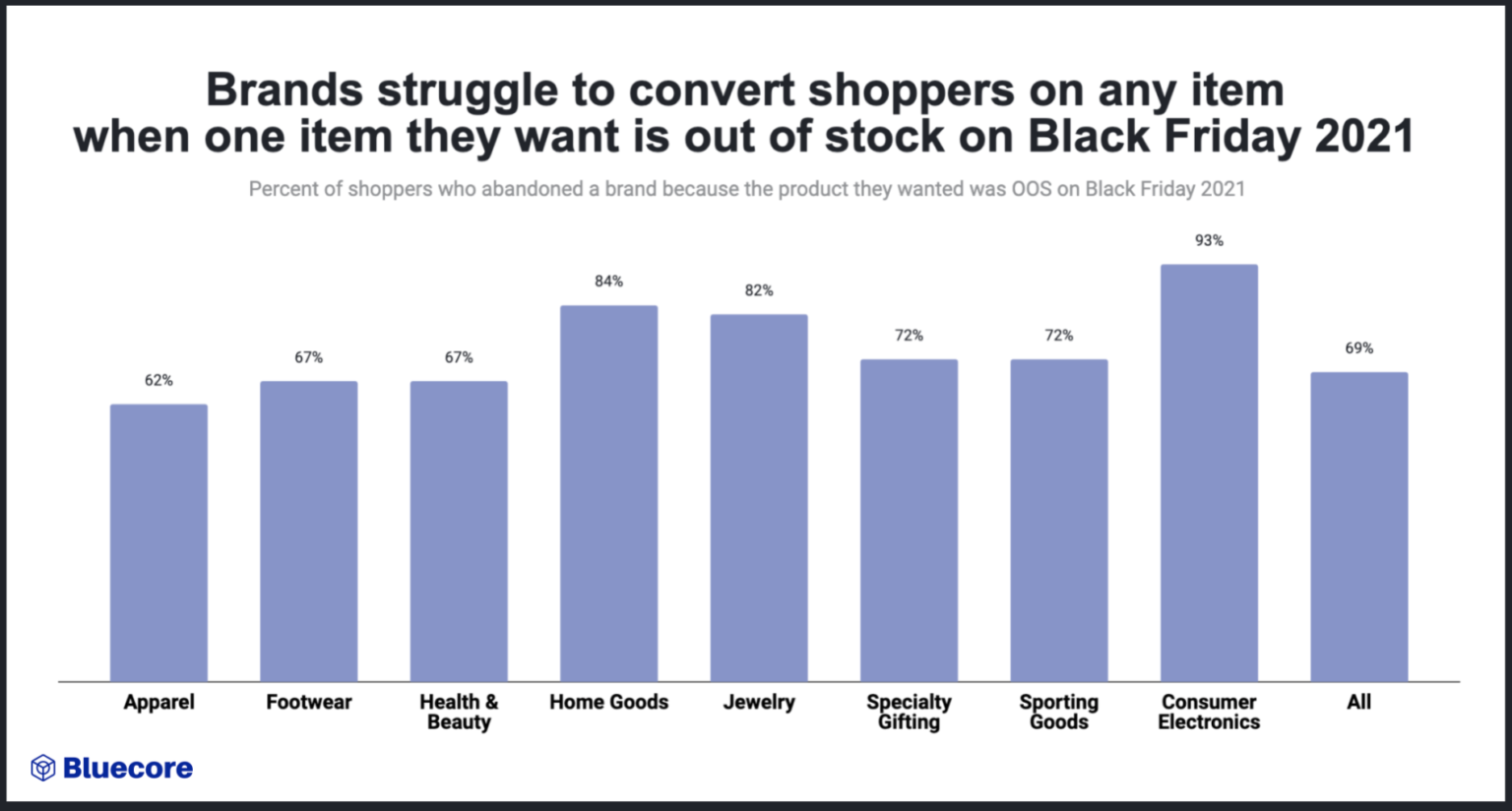
6 Retail Trends Leading the Industry in 2022
After two years of global economic change sparked by the pandemic, retailers are still dealing with the aftermath of the industry’s tectonic shift.
We went from the pandemic to the global supply shortage, which brought us all the way up to retail’s newest growing challenge — inflation. Needless to say, we’re all pretty exhausted. But brands aren’t ready to give into the fatigue just yet. Over the next twelve months, last year’s lessons will be this year’s opportunities.
Retail trends will be defined by strategies born during the pandemic and matured in the global economic developments that followed. We’ll see retailers become more and more adaptable and ready for anything, with intelligence that works harder (and smarter) for brands than ever before.
In 2022, companies will deepen their commitments to lessons learned over the past two years as the path to growth and increased revenue has fundamentally changed forever.
Market Forces Influencing 2022’s Top Retail Trends
Here’s what we’re expecting to see this year.
- Thanks to data-driven infrastructure, apparel brands will be most prepared to address supply chain issues. This past holiday season, apparel converted 38% of shoppers who encountered out-of-stock products. Intelligent, agile technology is the key to helping retailers succeed.
- Low inventory doesn’t have to mean lost opportunities for brands. Discovery and personalization will make or break a brand’s ability to sell alternatives.
- Retailers will incentivize purchases through curated shopper experiences – not discounts. During the inventory shortage, brands used the opportunity to stop discounting and start rethinking perceived value.
- Vertical applications of AI will go deep. Brands will rely on intelligence that addresses industry-specific business problems for more than just surface-level tasks.
- Brands will focus on customer retention more than acquisition. Strategies that commit to long-term relationships with shoppers will define 2022.
- Online shopping expands selling opportunities for retailers — but not all will be able to build enduring brands. Anyone can sell a product in our digital environment creating a low bar for opportunity — but the bar for success will rise.
Let’s take a closer look at these trends.
Thanks to data-driven infrastructure, apparel brands will be most prepared to address supply chain issues.
With supply chain breakdowns, retailers were left wondering what to do when their shipments didn’t come in at the end of 2021. This posed a risk not only for driving revenue, but also for keeping customers happy with brands — leading right into the biggest retail holiday of the year.
Apparel brands were ready to address the risk. On Black Friday 2021, we found that apparel was the most successful at driving conversions from customers that encountered out-of-stock products, with 38% of those shoppers converting to another product after realizing the one they wanted wasn’t available.

Why? Apparel brands have introduced data-driven infrastructures focused on combining shopper behavior with the nuances of their product catalog to redirect shoppers’ attention to product alternatives and other in-stock items that they predict each shopper will love.
Automated personalization used by apparel brands to predict what shoppers will want next in light of inventory shortages will have other unexpected benefits this year that go beyond product alternatives. In 2022, apparel retailers will continue that commitment to intelligence by being able to predict which inventory to stock in warehouses — saving customer service teams from unhappy customers and saving a brand’s bottom line. Other verticals will follow suit.
Low inventory doesn’t have to mean lost opportunities for brands.
The global supply chain shortage left retailers scratching their heads with ample stock for some items and little to none for others. Supply chain issues will continue into 2022, but that doesn’t necessarily mean lost opportunities for retailers. Inventory shortages can actually give retailers an opportunity to introduce shoppers to other in-stock products or categories that are high-in-stock and promote them to customers who have shown an affinity for them in the past.
Personalized marketing will bring shoppers back and repair relationships for brands who might have otherwise lost them to inventory shortages. This way, retailers will ensure that they continue to make sales whether or not shipping freights show up on time.
Retailers will incentivize purchases through curated customer experiences – not discounts.
For a long time, brands have been slowly redefining their value with shoppers beyond discounts. Steep discounting erodes the value of a product, cuts into margins and trains shoppers to take the wait-and-see approach for a better deal. The global supply shortage has given brands the leverage they need to minimize discounting and acquire new shoppers through other loyalty-based programs and offerings that think beyond an immediate sale.
A brand like Madewell, for instance, would prefer to win a new shopper and create loyalty by promoting its custom denim tailoring than by offering a sitewide 20% discount that will likely only influence the immediate purchase.
In 2022, brands will continue this commitment to value and replace blanket discounts with unique, personalized offerings based on the information they have on their shoppers (think free shipping, sizing and convenience) married with their own unique selling points like free tailoring and personalization and exclusive in-store experiences.
Vertical applications of AI will go deep.
When retailers first started introducing AI/ML into their business strategies, those applications generally revolved around predictive and prescriptive analytics to augment human decision making. With more and more businesses adopting AI/ML, there’s increased pressure for the intelligence to be more and more actionable.
This year, we’ll see application of intelligence go deeper than ever before, with well-defined problem sets for specific industry verticals. Rather than relying on AI for just nominal tasks, we’ll see AI informing business decisions across processes and supply chains. Rather, it will answer questions about replenishment cadences for shoppers and best channels for engagement for shoppers. We’ll also see vertical-focused AI convert real-time user demand and intent into predictions that act and scale with companies.
Brands will focus on customer retention more than acquisition.
Brands will still be racing to capture as many shoppers as possible during 2022 with the explosion of digital, but what will ultimately set brands apart is their ability to nurture the shoppers they already have.
In 2022, brands will shift strategies from acquisition to retention. In a time of economic uncertainty, acquisition costs are rising and brands that use tactics that only get them to the first sale won’t see sustainable profitability. This year, brands will invest in marketing that focuses on each shopper’s experience with a brand over time to achieve repeat purchases again and again. Brands will begin optimizing for the customer and investing in strategies that nurture shoppers into lifelong customers through compelling and personalized shopper experiences wherever they are online.
Online shopping expands selling opportunities for retailers — but not all will be able to build brands.
Right now, anyone can sell products online. With self-serve selling models and more channels and avenues to sell than ever, the barrier to entry is low. In 2022, we’ll see the barrier to success rise just as quickly.
What will set new brands apart this year will be not only selling products, but selling a mission and community that shoppers want to be a part of. To achieve this, brands will need to use all of their data intelligently from that first moment of engagement to create experiences that are curated at each touchpoint — proving that they have a deep understanding of each shopper’s preferences and interests — no matter how big these businesses grow.
This year, we’ll continue to see new digital-first retailers enter the space, but only those that go beyond the sale to invest in their communities and create exclusive shopper experiences will make it 2023.
Sustainable New Pathways
While the only constant will continue to be change this year, brands won’t be at the whim of market forces. This year, we’re going to see brands investing in strategies that will help them navigate those environmental shifts and build sustainable new pathways to drive long-term growth.





